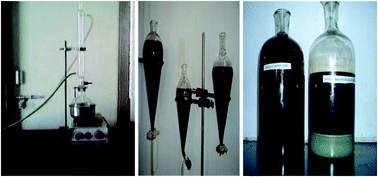Effects of single and split injection on the performance, emission and combustion attributes of a CRDI engine powered with diesel and honge biodiesel
Abstract
This paper reports an investigation of the use of biodiesel in a common rail direct injection (CRDI) engine. Experiments were carried out on a CRDI engine powered with diesel and biodiesel to investigate the effect of injectors with different numbers of holes on its performance. CRDI operation resulted in a better brake thermal efficiency (BTE) with a 7-hole injector for both fuels and injection strategies adopted. The HC, CO, and smoke emissions were reduced, but NOx emissions were higher for both fuels. It was seen that the ID and CD of honge oil methyl ester (HOME) were higher than those of the diesel. But, the ID was found to be lower at 100% load compared to 80% load, and on the other hand, the CD was higher at 100% load compared to 80% load. Also, a 7-hole injector resulted in a lower ID and CD as compared to a 6-hole injector. The diesel- and HOME-powered CRDI engine with the 7-hole injector yielded a 6% to 11% lower ID and a 15% to 19% lower CD as compared to the CI mode. PP and peak HRR of the HOME were also lower. The 7-hole injector resulted in a higher PP and HRR for all fuels due to the better air–fuel mixing. Discrete or multiple or split and single point injections were adopted for biodiesels at 900 bar IP and IT of 10° BTDC using the 7-hole injector. The split injection of HOME adopted with a 40-30-30 combination resulted in a slightly higher BTE compared to the 40-20-40 combination. However, both single and discrete or multiple injections adopted showed improved fuel consumption compared to single point injection and the poor performance of HOME in both the versions compared to the diesel engine. Hence, the multiple injection performance of biodiesels leans toward that of diesel. Multiple and single point injections were adopted for biodiesels at different injection opening pressures and a fixed IT of 10° BTDC for 80% loading, and it was found that BTE was slightly higher at 900 bar for all fuels. The split injection of HOME adopted with a 40-30-30 combination resulted in a slightly higher BTE compared to the 40-20-40 combination. Among all the injecting pressures tested, the highest BTE was noted for an IOP of 900 bar for a split injection of 40-30-30.



 Please wait while we load your content...
Please wait while we load your content...